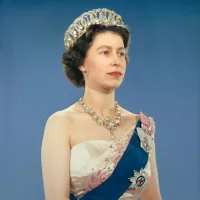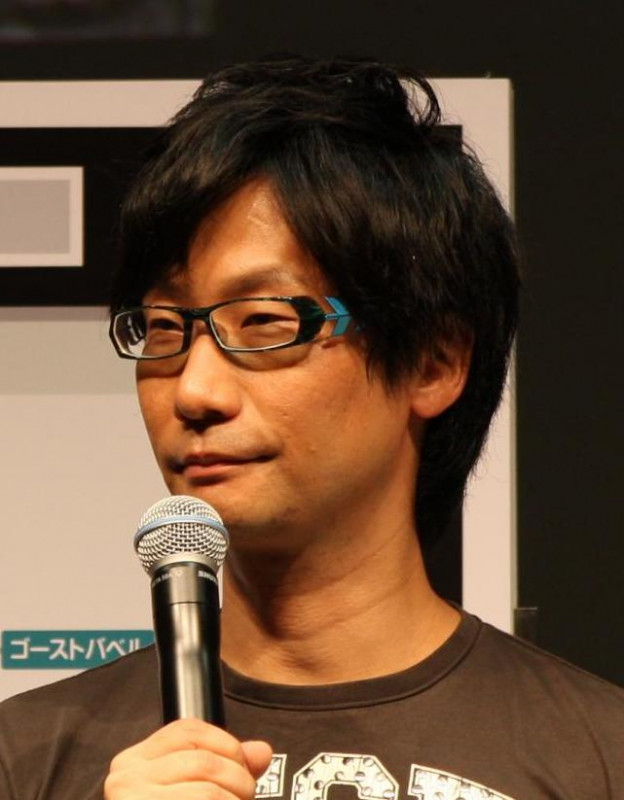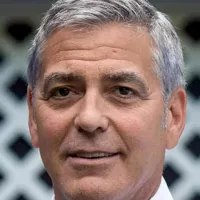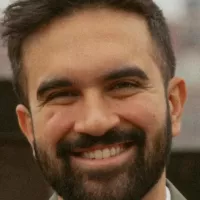The head of state is the public face of a sovereign nation. The specific title and authority of this position vary significantly depending on the country's governmental structure and distribution of power. In some nations, the head of state also serves as the head of government, wielding considerable executive power. Conversely, in other countries, the role is largely ceremonial, with the head of state acting as a symbolic figurehead without substantial political influence. The nature of the head of state is therefore highly contextual and dependent on the specific constitutional and political framework of each country.
1901: End of Queen Victoria's Reign
In 1901 Queen Victoria's Reign ended (1837-1901).
1911: Unveiling of the Victoria Memorial in London
In 1911, the Victoria Memorial was unveiled in front of Buckingham Palace in London by King George V, commemorating Queen Victoria and her reign.
1918: German Revolution
The German Revolution occurred in 1918, contributing to the conceptual evolution of sovereignty.
1919: German Revolution
The German Revolution spanned from 1918 to 1919, contributing to the conceptual evolution of sovereignty.
1920: India's head of state at the time of the League of Nations.
In 1920, at the time of the League of Nations, India's head of state was the monarch of the United Kingdom, ruling as Emperor of India through the Viceroy and Governor-General of India.
1921: Monument commemorating Queen Victoria unveiled in Kolkata
In 1921, a monument commemorating Queen Victoria's reign as Empress of India from 1876 was placed in front of the Victoria Memorial Hall in Kolkata (Calcutta).
1922: Central Executive Committee serves as collective head of state
From 1922 to 1938, the Central Executive Committee (CEC) of the Congress of Soviets served as the collective head of state in the Soviet Union.
1922: Establishment of the USSR and its legislative branch.
In 1922, the position of Chairman of the Central Executive Committee of the All-Russian Congress of Soviets was considered to be the closest common equivalent of a head of state as a natural person.
1924: Establishment of the Communist Mongolian People's Republic
In 1924, the Communist Mongolian People's Republic was established, replacing the lamaist theocracy that had been in place since 1585.
1926: Canadian Governor-General refuses to dissolve parliament
In 1926, Canada's governor-general departed from constitutional convention by refusing the head of government's advice to dissolve parliament and call a general election.
1927: Construction of Mount Rushmore begins
In 1927, construction began on the Mount Rushmore National Memorial in the Black Hills of South Dakota.
1928: National Government of the Republic of China Established
In 1928, The National Government of the Republic of China was established, having a panel of about 40 people as collective head of state.
1932: President von Hindenburg dismisses chancellor and appoints new one
In 1932, German President Paul von Hindenburg dismissed a chancellor and selected his own replacement, even though the outgoing chancellor had the Reichstag's confidence while the new one did not.
1934: Adolf Hitler as Führer
In 1934, Adolf Hitler adopted the style of Führer, combining the roles of party chief, head of state, and head of government in Germany.
1938: Presidium of the Supreme Soviet serves as collective head of state
From 1938 to 1989, the Presidium of the Supreme Soviet served as the collective head of state in the Soviet Union.
1940: King Leopold III Surrenders Belgium to Germany
In 1940, King Leopold III of Belgium surrendered to the invading German army against the will of his government, believing it was his responsibility to the nation. This decision was highly controversial.
1941: Construction of Mount Rushmore completed
In 1941, the construction of the Mount Rushmore National Memorial was completed.
1945: End of Adolf Hitler's rule as Führer
In 1945, Adolf Hitler's rule as Führer, Germany's head of state and government, came to an end.
1945: India's head of state at the founding of the United Nations
In 1945, at the founding of the United Nations, India's head of state was the monarch of the United Kingdom, ruling as Emperor of India through the Viceroy and Governor-General of India.
1946: India's head of state at the end of the League of Nations.
In 1946, at the end of the League of Nations, India's head of state was the monarch of the United Kingdom, ruling as Emperor of India through the Viceroy and Governor-General of India.
1947: Governor General Permitted to Exercise Royal Prerogative in Canada
In 1947, the Governor General of Canada was permitted to exercise head of state powers belonging to the monarch as part of the royal prerogative.
1956: Chairman of the Bureau of the Central Committee of the Russian SFSR post established.
In 1956, the position of Chairman of the Bureau of the Central Committee of the Russian SFSR was established.
1958: Charles de Gaulle defines the role of head of state
In 1958, Charles de Gaulle, while developing the Constitution of France, stated that the head of state should embody "the spirit of the nation".
1959: Sukarno Abolishes Vice-Presidency and Assumes Additional Roles
In 1959, after the resignation of Vice President Mohammad Hatta, President Sukarno of Indonesia abolished the position of vice-president, assumed the positions of Prime Minister and Head of Cabinet, and proclaimed himself president for life, styling himself "Supreme Commander of the Revolution."
1959: Singapore adopts Yang di-Pertuan Negara style for its governor.
In 1959, when Singapore gained self-government, it adopted the Malay style Yang di-Pertuan Negara for its governor.
January 1960: Cameroon's first president not formally styled 'president'
In January 1960, as Cameroon became an independent republic, Ahmadou Babatoura Ahidjo, the first president, was initially known as 'chef d'état' (head of state) because a formal title was yet to be determined.
May 1960: Ahmadou Babatoura Ahidjo styled president
On May 5, 1960, Ahmadou Babatoura Ahidjo, previously known as 'chef d'état', was formally styled as president of the independent republic of Cameroon.
1961: Vienna Convention on Diplomatic Relations Codifies Head of State Role
In 1961, the Vienna Convention on Diplomatic Relations codified the role of the head of state in accrediting ambassadors through letters of credence, solidifying a longstanding custom in international relations.
August 1963: Singapore's unilateral declaration of independence
On August 31, 1963, Singapore made a unilateral declaration of independence and Yusof bin Ishak kept the style Yang di-Pertuan Negara.
September 1963: Singapore's accession to Malaysia
After September 16, 1963, Singapore acceded to Malaysia as a state, and Yusof bin Ishak remained in the style Yang di-Pertuan Negara.
1963: Queen Elizabeth II Appoints Alec Douglas-Home as Prime Minister
In 1963, Queen Elizabeth II of the United Kingdom appointed Alec Douglas-Home as Prime Minister on the advice of outgoing Prime Minister Harold Macmillan, marking the last time the monarch unilaterally selected the prime minister.
August 1965: Singapore becomes a sovereign republic.
After its expulsion from Malaysia on August 9, 1965, Singapore became a sovereign Commonwealth republic and installed Yusof bin Ishak as its first president.
1966: Chairman of the Bureau of the Central Committee of the Russian SFSR post abolished.
In 1966, the position of Chairman of the Bureau of the Central Committee of the Russian SFSR was abolished.
1974: Romania moves to a unitary presidency
In 1974, Romania, under dictator Nicolae Ceausescu, transitioned from a collective head of state to a unitary presidency.
1974: Sweden's Instrument of Government Changes Monarch's Functions
In 1974, Sweden passed the Instrument of Government, significantly reducing the Swedish monarch's traditional head of state functions, transferring many powers to the speaker of the Riksdag and the prime minister.
1974: Greek President gains powers under Hellenic Republic constitution
In 1974, the original powers given to the Greek President under the Hellenic Republic constitution moved Greece closer to the French semi-presidential model.
1974: Instrument of Government in Sweden
In 1974, under the Instrument of Government of Sweden, the Speaker of the Riksdag was given the role of formally appointing the prime minister, following a vote in the Riksdag.
1975: Australian constitutional crisis
In 1975, during the Australian constitutional crisis, the governor-general unexpectedly dismissed the prime minister to break a stalemate between the House of Representatives and the Senate.
1976: James Mancham becomes first President of Seychelles
In 1976, under Article 31 of the Seychelles Independence Constitution, James Mancham became the first President of Seychelles by name, transitioning from his role as the prime minister of colonial Seychelles before independence.
1977: Libyan Jamahiriya replaces previous republic.
In 1977, the Libyan Jamahiriya replaced the previous republic.
March 1979: Role of head of state transferred to the Secretary-General of the General People's Congress in Libya
In March 1979, the role of head of state in Libya was transferred to the Secretary-General of the General People's Congress.
1980: Sweden declares equal primogeniture
In 1980, Sweden became the first monarchy to declare equal (full cognatic) primogeniture by rewriting its 1810 Act of Succession.
1983: Netherlands follows suit with equal primogeniture
In 1983, the Netherlands followed Sweden's lead by adopting equal primogeniture.
1986: François Mitterrand Cohabits with Jacques Chirac
In 1986, French President François Mitterrand, a Socialist, was compelled to cohabit with Jacques Chirac, a neo-Gaullist, who became his prime minister due to opposition control of the legislature.
1988: François Mitterrand and Jacques Chirac cohabitation ends.
The cohabitation between French President François Mitterrand and Prime Minister Jacques Chirac came to an end in 1988.
1989: End of the Presidium of the Supreme Soviet as collective head of state
In 1989, the Presidium of the Supreme Soviet ceased to be the collective head of state in the Soviet Union.
1990: Norway adopts equal primogeniture
In 1990, Norway adopted equal primogeniture for succession to the throne.
1990: Belgian Constitutional Crisis over Abortion Bill
In 1990, a constitutional crisis occurred in Belgium when the head of state refused to sign into law a bill permitting abortion. The cabinet assumed the power to promulgate the law while he was treated as "unable to reign" for twenty-four hours.
1991: Belgium adopts equal primogeniture
In 1991, Belgium adopted equal primogeniture for succession to the throne.
1993: Chinese President Position Convention Established
Since 1993, the presidency in China has been held simultaneously by the general secretary of the Chinese Communist Party, establishing a convention where the top leader in the one-party system also serves as president.
1994: Yasser Arafat styled President of the Palestinian National Authority
In 1994, Yasser Arafat, leader of the Palestine Liberation Organization, was styled the first "President of the Palestinian National Authority".
September 1998: North Korea replaces President post with President of the Presidium of the Supreme People's Assembly
On September 5, 1998, North Korea formally replaced the post of president with the office of President of the Presidium of the Supreme People's Assembly for ceremonial purposes, and simultaneously declared the party leader's post as chairman of the National Defense Commission as "the highest post of the state".
2003: Constitutional change in Liechtenstein
In 2003, Liechtenstein's head of state was given constitutional powers that included a veto over legislation and power to dismiss the head of government and cabinet.
2008: Office restyled as "President of the State of Palestine"
In 2008, the office of the President of the Palestinian National Authority was restyled as "President of the State of Palestine".
2010: Constantine II referred to by former royal titles at Swedish royal wedding
In 2010, despite being deposed, Constantine II was still referred to by his former royal titles in guest lists at the Swedish royal wedding.
2011: Overthrow of Muammar Gaddafi
In 2011, Muammar Gaddafi was overthrown, marking the end of his de facto leadership as "Guide of the Revolution" in Libya.
2011: Constantine II referred to by former royal titles at British royal wedding
In 2011, despite being deposed, Constantine II was still referred to by his former royal titles in guest lists at the British royal wedding.
2011: Reforms proposed for UK and Commonwealth realms
In 2011, similar reforms regarding primogeniture were proposed for the United Kingdom and other Commonwealth realms.
2011: Political retirement of the 14th Dalai Lama
In 2011, the 14th Dalai Lama politically retired, ending the era of Dalai Lamas being both political and spiritual leaders of Tibet since the time of the 5th Dalai Lama.
2012: Constantine II referred to by former royal titles at Luxembourg royal wedding
In 2012, despite being deposed, Constantine II was still referred to by his former royal titles in guest lists at the Luxembourg royal wedding.
2015: Equal primogeniture reforms come into effect in UK and Commonwealth realms
In 2015, reforms for equal primogeniture came into effect in the United Kingdom and other Commonwealth realms, after being approved by all affected nations.
2017: Vienna Convention on Diplomatic Relations ratification update
As of 2017, 191 sovereign states had ratified the Vienna Convention on Diplomatic Relations.
Mentioned in this timeline

Elizabeth II reigned as Queen of the United Kingdom and...
The Union of Soviet Socialist Republics USSR existed from to...
India officially the Republic of India is a South Asian...
Germany officially the Federal Republic of Germany is a Central...
China officially the People's Republic of China PRC is an...
Korea is a peninsular region in East Asia comprised of...
Trending

1 second ago Kojima Confirms Self-Inserted Easter Eggs in Death Stranding 2, Expresses Disappointment Over Early Reveal.

60 minutes ago Shakira reveals tour details and asks fans for song suggestions for concerts.
60 minutes ago Lamine Yamal to possibly inherit Barcelona's iconic No. 10 jersey, inspired by Maradona.
2 hours ago Japan Airlines: Yuza Malt Sale, Free Flights for US Tourists, and Domestic Flight Sale.

28 days ago Amal Clooney stuns in strapless dresses during date nights with George Clooney.
9 days ago Mortgage Rates Slightly Dip Amidst Fed's Rate Hold and Tariff Turmoil.
Popular

Jupiter is the fifth and largest planet from the Sun...

A blue moon is defined in several ways most commonly...

Kelley O'Hara is a celebrated American former professional soccer player...

Candace Owens is an American conservative and far-right political commentator...

Zohran Kwame Mamdani is a Uganda-born American politician representing New...

Melania Trump is a Slovenian-American former model and the current...